How to Choose the Right Sunscreen?
A Complete Guide for Effective Sun Protection — CASSILLIA
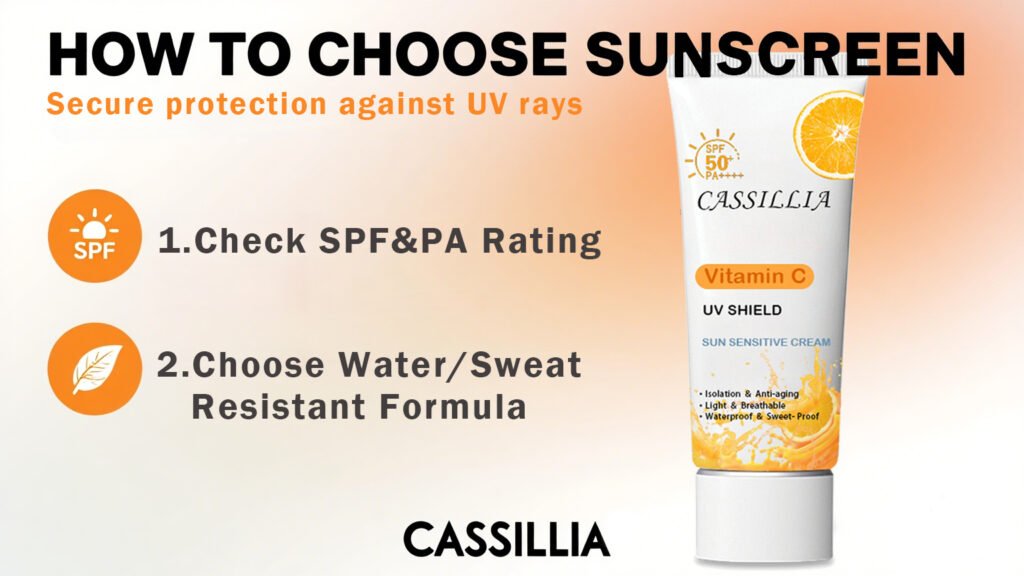
When discussing sun protection, it’s important to first understand what sunscreen is truly designed to prevent. The primary goal of sunscreen is to defend the skin against ultraviolet (UV) radiation, which comes in three forms: UVA, UVB, and UVC. While UVC is absorbed by the ozone layer and doesn’t reach the earth’s surface, both UVA and UVB penetrate the skin and cause damage. UVB is known for causing sunburn, while UVA accelerates skin aging and pigmentation. Both types of UV rays should be blocked to maintain healthy skin.
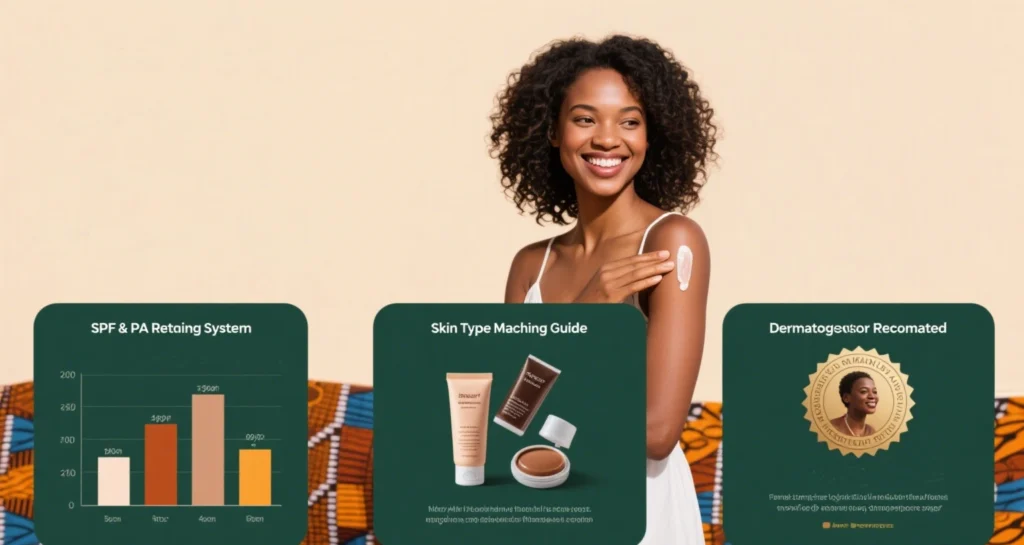
Why Year-Round Sun Protection Matters
Many people associate sunscreen use with summer, when the sun is strong and UV exposure is obvious. However, UV rays are present all year round, even during spring, autumn, or cloudy and rainy days. If you only start applying sunscreen cream in the summer, your skin may already have been exposed to cumulative UV damage. Therefore, sun protection is not just seasonal—it’s a year-round commitment.
Types of Sun Protection: Physical vs. Chemical
Physical Sun Protection
This includes wearing sun-protective clothing, wide-brimmed hats, sunglasses, and using umbrellas to physically block sunlight. These methods are highly effective when used consistently.
Chemical Sun Protection
This refers to the use of sunscreen products, such as sunscreen for face, sunscreen cream, lotions, sprays, or gels. These products work by either absorbing or reflecting UV radiation and are essential for exposed skin areas.
Many people judge sunscreen effectiveness based on how tanned they become, but the real clinical measure is whether the skin avoids sunburn—characterized by redness, pain, blisters, or peeling. Tanning, though often delayed, also indicates UV damage.
Understanding SPF and PA Ratings
SPF (Sun Protection Factor) indicates how well a sunscreen protects against UVB rays (which cause sunburn). For example, SPF 15 allows someone to stay in the sun 15 times longer without burning than without protection—assuming correct application of 2mg/cm².
Products that are labeled waterproof must undergo strict testing. If SPF drops less than 50% after water exposure, the sunscreen can claim water resistance, typically marked with 40 or 80 minutes of effectiveness.
PA (Protection Grade of UVA) is measured using the “+” system, showing how well a product protects against UVA rays, which are responsible for tanning and long-term skin aging. The more “+” symbols, the stronger the UVA protection.
⚠️ Keep in mind: Higher SPF and PA values offer more protection but can also be heavier or more irritating, especially for sensitive skin types.
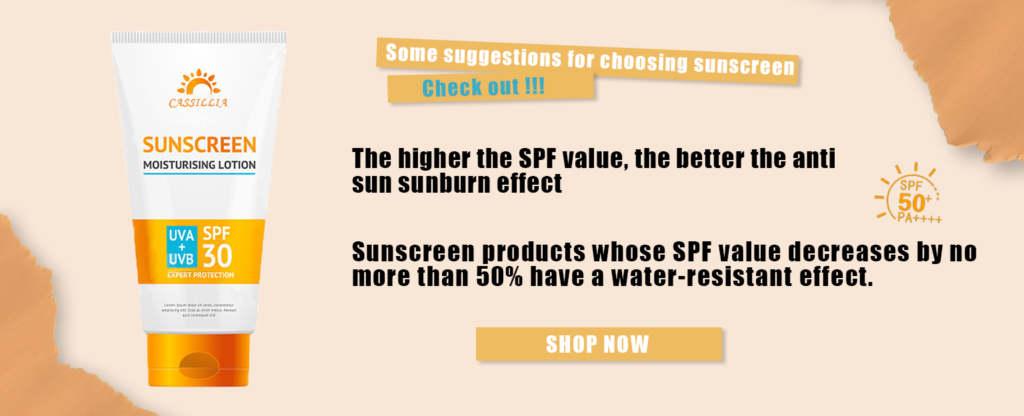
How to Choose the Best Sunscreen Based on Skin Type
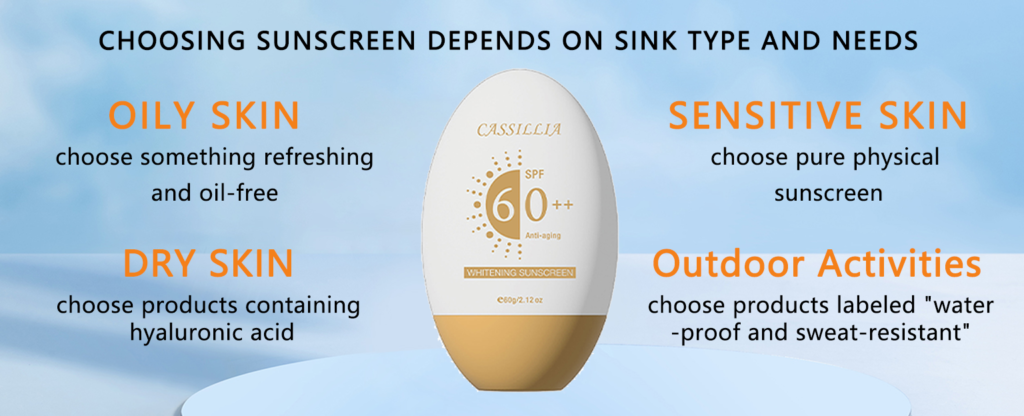
Oily or Acne-Prone Skin
Look for lightweight, non-comedogenic formulas such as gels or oil-free fluids. A sunscreen for face that’s labeled “non-acnegenic” helps prevent pore clogging.
Dry or Sensitive Skin
Choose sunscreen cream with hydrating ingredients like glycerin or hyaluronic acid. Combination physical and chemical sunscreens tend to be less irritating and offer moisturizing benefits.
Sensitive Skin, Children, or Pregnant Women
Opt for pure physical sunscreens, containing zinc oxide or titanium dioxide. These are gentler and safer for delicate skin.
Outdoor Sports or Swimming
Use a water-resistant sunscreen and reapply according to its water resistance rating (40 or 80 minutes). Sprays or sticks can be convenient for quick reapplication.
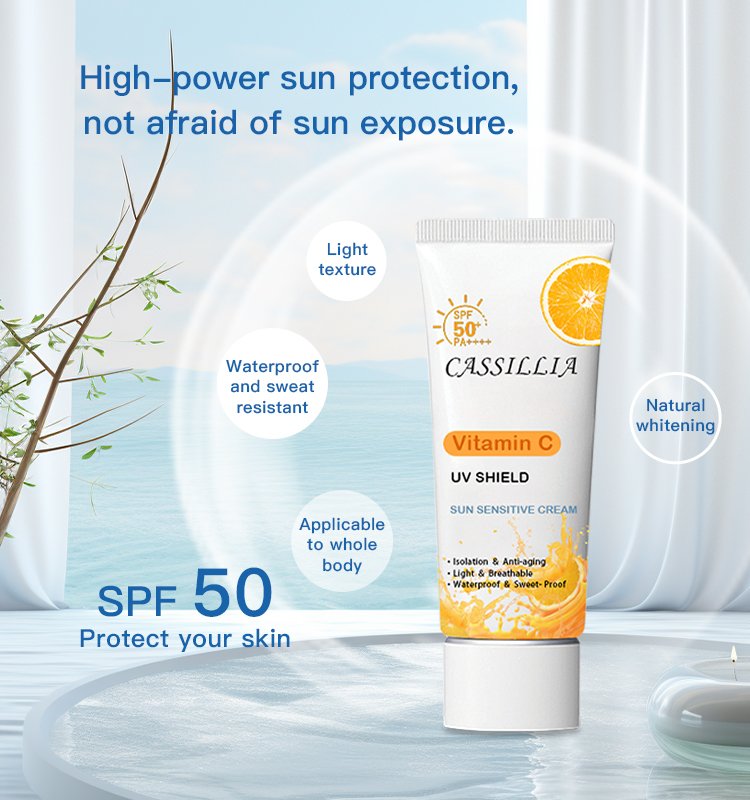
Choosing the Right Sunscreen Format
Sunscreen Cream: Ideal for dry or sensitive skin, offering rich moisture and strong coverage.
Gel or Lotion: Better suited for oily or combination skin, often leaving a lighter finish.
Spray: Convenient for body application and reapplication throughout the day.
Sunscreen Stick: Best for targeting small areas like the nose, ears, and neck. Easy to carry but may offer slightly less coverage.
Final Tips for Effective Sun Protection
Apply sunscreen for face at least 15 minutes before sun exposure.
Reapply every 2 hours, or more frequently if swimming or sweating.
Don’t forget often-missed areas like the ears, neck, and back of hands.
Combine chemical sunscreen with physical barriers for optimal defense.
Conclusion
Choosing the right sunscreen isn’t just about the highest SPF. It’s about finding a formula that suits your skin type, lifestyle, and sun exposure level. Whether you’re applying a sunscreen cream for dry skin, or a refreshing sunscreen for face with a matte finish for oily skin, make sure you’re consistent and attentive to reapplication. After all, sun protection is not a luxury—it’s a daily necessity.
Related Posts To You

African Sunscreen Market: From Luxury to Necessity
African Sunscreen Market: From Luxury to Necessity Discover how CASSILLIA supports global brands with OEM/ODM sunscreen cream solutions tailored for dark skin and tropical climates.

“GOLDEN” Skin Care Products in the African Market
“GOLDEN” Skin Care Products in the African Market Luxury, Brightening & Natural Care In Africa, “GOLDEN” is more than a color — it symbolizes luxury,

Nigeria Whitening Skincare Products Market
Nigeria Whitening Skincare Products Market Nigeria Whitening & Skincare Products Market: Culture, Safety and Opportunity in the African Skincare Market Cultural Aesthetics & Social Drivers

Why Essential Oils Are Essential for Skincare
Why Essential Oils Are Essential for Skincare Learn how to use pure essential oils for emotional management, body care, and creating the perfect environment. Essential

Chinese Top Skin Care Supplier
Building 8, Huanya Industrial Park, Taiping Town, Conghua District, Guangzhou, China
Tel: +86 13922328503
E-mail: info@cassillia.com
quick links
Products
- Shower Gel
- Bath Sets
- Body Lotion
- Soap
- Body Oil
- Face Cream
- Face Wash
- Toothpaste
Why CASSILLIA
- OEM/ODM Customization
- Market-Focused
- Reliable Supply Chain
- Competitive Pricing
- One-Stop Solution
- Global Trade Show Experience
- 23 Years of Manufacturing Expertise


